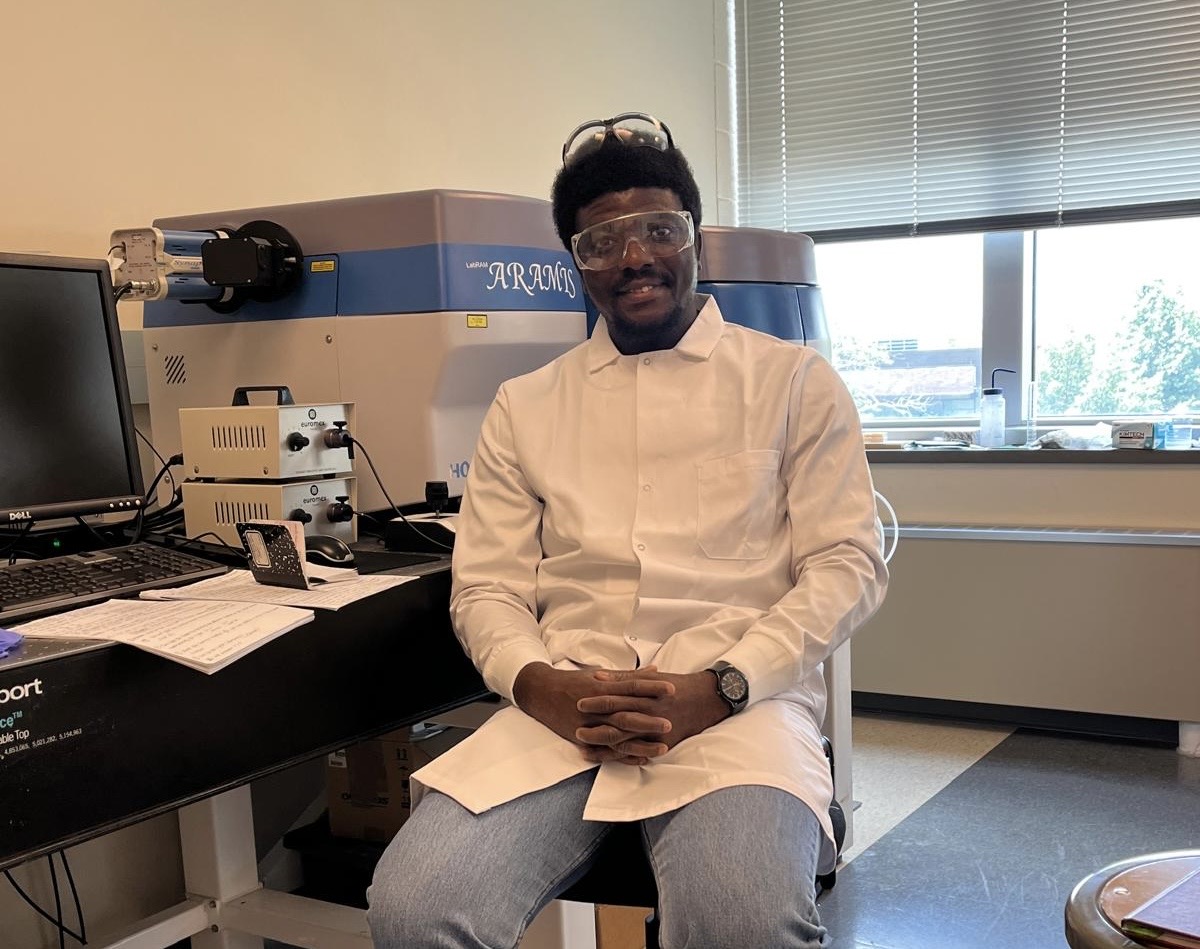Nigerian-born American scientist, Engr Iheanyichukwu Chukwugozie Ajoku began his research focused on developing a reliable waste vitrification technique for the long-term processing and storage of spent nuclear fuel and molten salt reactors (MSRs) waste.
He emphasized the significance it would be and how it would boost the US economy and nuclear energy industry.
The application of iron phosphate glasses as a host material offers a long-term and robust solution. This is because it has unique characteristics such as a lower melting temperature, excellent chemical durability, and the ability to accommodate large amounts of nuclear waste compared to borosilicate glasses.
According to Engr. Ajoku, iron phosphate glasses are the most preferred host material utilized for managing nuclear waste.
The future of nuclear waste management, according to Engr. Ajoku, relies on providing viable long-term solutions with technological readiness to safely store the waste in a chemically stable glassy form while in their repository.
He explained that the U.S. Department of Energy (DOE) and commercial nuclear facilities store a large amount of unprocessed high-level waste (HLW) in underground tanks or in reactors that are either in operation or not.
This is one of the reasons he is so enthusiastic about studying waste vitrification research. To achieve net zero carbon emissions and sustainable energy, especially in nuclear energy, waste vitrification remains crucial, according to Engr. Ajoku, a ceramic and glass science engineer-in-training. It promotes the safety and sustainability of nuclear energy.
Engr. Ajoku is a ceramic engineering PhD student at Missouri University of Science and Technology (Missouri S&T) and the Director of Communication for the Missouri S&T Council of Graduate Students.
He is a member of the American Ceramic Society, and the Society of Glass Technology, U.K. He also works at Missouri S&T’s Materials Research Center (MRC) lab as a graduate research assistant in a glass research group. According to him, it is important to study the relationships between the waste glass’s composition, structure, and properties.
He added that the composition-structure-property relationship of the vitrified waste can be thoroughly investigated using characterization tools like x-ray diffraction, Raman spectroscopy, optical spectroscopy, scanning electron microscopy, transmission electron microscopy with energy dispersive x-ray spectroscopy, and differential scanning calorimetry/thermogravimetric analyzer.
Due to the absence of a permanent repository for the safe storage of high-level waste (HLW), the United States incurs high waste indemnities of more than $7.4 billion annually, as well as greater maintenance expenses and longer processing times.
This is another reason that makes me so excited about this research. His research is motivated by the outstanding work of two professors of ceramic engineering, Drs. Richard Brow and Delbert E. Day, who have achieved international recognition in the field of glass science research for their innovative discoveries utilizing glasses for biomedical applications and waste immobilization.
Engr. Ajoku expressed interest in international STEM outreach. He is also an alumnus of the University of Lagos, Nigeria, the nation’s pride and the school of first choice, where he earned a bachelor’s degree in metallurgical and materials engineering in 2016.
He visited his alma mater on December 23, 2024, and January 10, 2025, as part of an international STEM outreach initiative sponsored by the American Ceramic Society (ACerS) and the Ceramic and Glass Industry Foundation, U.S.
He was welcomed by the current Dean of the Faculty of Engineering, Professor S.O. Adeosun, the head of the department (HOD) of Metallurgical and Materials Engineering, Associate Professor Henry Mgbermere, past HOD, Associate Professor Lawrence Osoba, his past undergraduate advisor, Associate Professor E.O. Obidiegwu, staff, and students at the University of Lagos.
In his presentation, “The Impact of STEM Outreach to Ceramics and Glass Science Education in Nigeria,” he stated that through this initiative, students and faculty would broaden their horizons by developing novel ceramic and glass systems for a range of technological and industrial applications, as well as diversifying into ceramic and glass science education and research.
Additionally, Engr. Ajoku donated two materials classroom kits, two glass science kits, and a $500 supplemental fund to help train staff, students, and faculty members on various applications of ceramic and glass science materials. He also encouraged professors and students to look into pursuing rewarding careers in glass science and ceramics through research.
The importance of the global STEM outreach was highlighted by Engr. Ajoku, who also expressed his strong interest in mentoring and educating faculty members and aspiring ceramic and glass engineers to collaborate, be independent, and take advantage of future opportunities in the field.
He added that the Nigerian government could use STEM outreach to educate secondary institutions and launch degree programs in ceramic and glass science engineering at various science and technology tertiary institutions. Novel research in this field and the establishment of glass science industries could emerge from this initiative, which would also provide jobs for fresh graduates.
Engr. Ajoku concluded that he would like to utilize his technical expertise and knowledge to make a significant contribution to the nuclear energy sector in the United States by bridging in the knowledge gaps, offering new insights, and developing reliable processing methods that would help build predictive capabilities for the synthesis, processing, and structure-property relationship for reliable waste vitrification processes.






